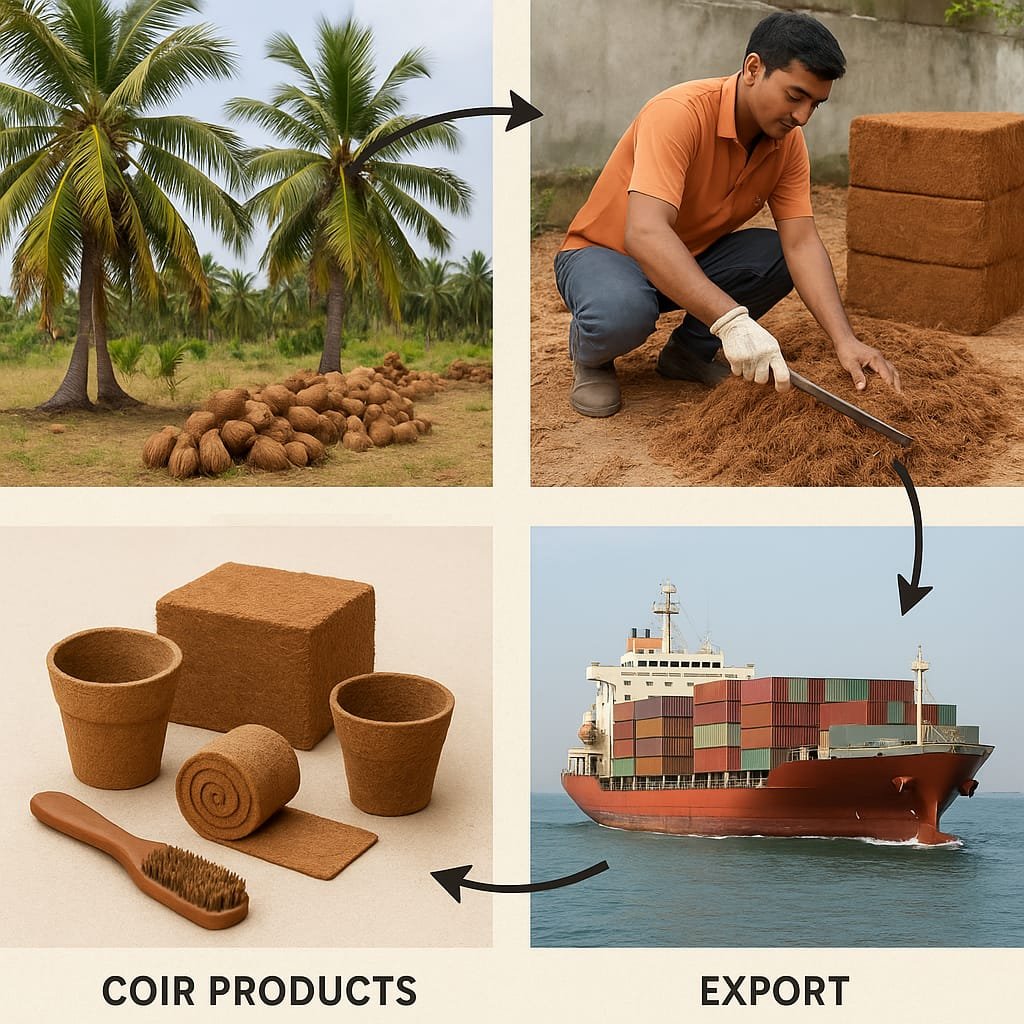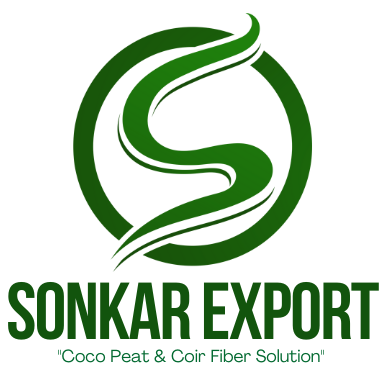
The journey of a coir product begins in the heart of tropical coconut plantations and ends in homes, farms, and industries across the globe. What was once considered waste—the husk of a coconut—has become a valuable, eco-friendly material used in agriculture, horticulture, erosion control, and home furnishing. India, being the largest exporter of coir products, follows a well-established, sustainable lifecycle to transform raw coconut husks into a range of globally traded goods.
In this blog, we’ll walk you through the entire lifecycle of a coir product—from its origin as a coconut to its export as a valuable commodity.
🌴 Stage 1: Coconut Harvesting
The lifecycle starts on coconut farms spread across South India, especially in states like Kerala, Tamil Nadu, Karnataka, and Andhra Pradesh. Mature coconuts are harvested manually or using tools. After extracting the edible coconut water and kernel, the remaining husk is collected for coir processing.
These husks, which would otherwise become agricultural waste, are now the raw material for a thriving industry.
💧 Stage 2: Retting – Softening the Husk
To extract coir fibers, the husks undergo a process called retting, where they are soaked in water for several weeks. This natural fermentation loosens the fibers, making them easier to separate. Traditional retting ponds are commonly used, though mechanical retting (which is faster and more hygienic) is increasingly adopted by modern coir units.
During retting:
Long, tough brown fibers are softened
Microbial activity breaks down pith and binds
Fibers become flexible and ready for separation
🧵 Stage 3: Fiber Extraction and Drying
Once retted, the husks are mechanically beaten or crushed to separate the coir fiber from the coir pith (coco peat). The long fibers are cleaned, sun-dried, and bundled, while the remaining pith is collected, dried, and sieved.
At this stage, coir diverges into two primary products:
Coir Fiber: Used for ropes, mats, brushes, mattresses, and geotextiles
Coco Peat: Compressed into blocks or discs used in horticulture and hydroponics
Modern machinery allows high-efficiency processing with minimal labor and waste.
🪵 Stage 4: Product Formation and Finishing
Once raw materials are ready, manufacturers process them into finished products:
Coir fiber is spun into yarns and woven into doormats, mattresses, rugs, and geotextile fabrics
Coco peat is compressed into blocks (5 kg bricks) or discs (650g) for easy packaging and expansion
Grow bags, coir pots, and mulch mats are formed using molds and presses
Finishing steps include:
Quality control (checking fiber strength, moisture content, EC level)
Trimming, dyeing, and packaging for retail-ready appearance
Labeling for compliance with international standards
📦 Stage 5: Packaging and Export
Once finalized, products are packed securely using pallets, shrink wraps, and eco-friendly materials to meet both domestic and international shipping regulations. Export documentation such as phytosanitary certificates, customs invoices, and quality certifications (ISO, OMRI, etc.) are prepared.
Major Indian ports like Tuticorin, Cochin, and Chennai serve as primary export hubs for coir products. Shipments are containerized and sent to markets in:
USA
Netherlands
Japan
Germany
Australia
Exporters ensure timely delivery, consistent quality, and regulatory compliance to meet rising global demand.
🌍 Global Demand and Sustainable Impact
The beauty of the coir lifecycle lies not just in its economic value but in its sustainability. Every stage—from husk collection to export—follows an eco-conscious approach:
Zero-waste utilization of coconut husk
Low-energy processing using manual or semi-automated tools
Biodegradable products that replace plastic and synthetic alternatives
This lifecycle has helped coir become a cornerstone of green agriculture, sustainable landscaping, and eco-friendly home goods.
✅ Final Thoughts
The transformation of a humble coconut husk into a globally shipped coir product is a testament to India’s innovation, craftsmanship, and environmental stewardship. Each product carries the legacy of traditional industries and the promise of a greener tomorrow.
Whether you’re a buyer, a grower, or a curious consumer, understanding the lifecycle of coir helps you appreciate the value of this natural wonder—from coconut to export.
